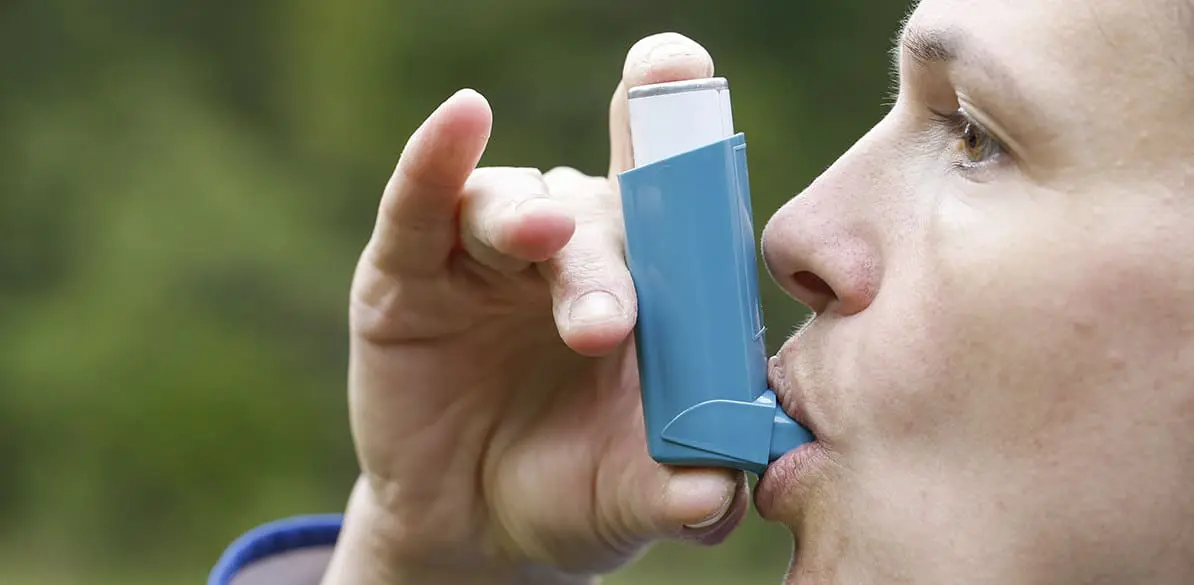Asthma and driving

Asthma is an episodic condition of reversible airway obstruction with bronchial inflammation, caused by an increased reactivity of the lower airways to multiple stimuli.
In some cases, the triggering factor is known, such as pollen or other allergens, some drugs or environmental toxic substances.
The reactivity of asthma is enhanced by stress, respiratory infections, emotions, exercise, cold air, aspirin, beta-blockers, food sulfites, air pollution, etc
- Its clinical expression can range from a mild condition that does not limit the activities of the patient, including driving, to serious life-threatening symptoms.
- Typical asthma is usually associated with recurrent cough episodes, generally dry, chest tightening, episodes of wheezing, dyspnea, and symptom-free intervals.
Tachypnea, tachycardia, use of the accessory breathing muscles and cyanosis are usually seen. The nocturnal predominance of symptoms is characteristic.
Fever and expectoration can occur in the infectious conditions associated with bronchospasm. - The advent of meters for home measurements of peak expiratory flow guide in the treatment regimen, in the appropriateness of asking the physician, and probably in the pulmonary capacity of the driver before starting a car.
At present the international guidelines prepared for the approach of asthma base their therapeutic strategy on following the severity of the patient, considering two main symptoms that are the daily number of rescue drug inhalations with corticoids and the number of night awakenings.
Advice on Asthma
- Patient with severe asthma cannot drive.
- It must be known that between a third and half of the patients with asthma are undiagnosed and, therefore, untreated.
- This means that the patient not resting for nocturnal episodes of his undiagnosed asthmatic condition is at a higher risk of falling asleep when driving.
- This situation is compounded by the frequent self-medication with antihistamines that cause somnolence.
- The asthmatic patient used to managing his drugs can abuse of the dose in quantity or frequency, expecting to obtain a faster benefit, but does not know the side effects of the drugs.
- Physicians should warn the patient of the side effects of antiasthmatic drugs and their interference with driving, since although respiratorily the patient feels well to drive, pharmacological symptoms would disable him from driving safely.
- The greater the knowledge of asthma by the patients and his relatives on the triggering factors and the drugs and appropriate doses and administration routes, the better these patients will be.
- It is fundamental that the physician provides all possible information understandably, for the purpose of avoiding that an episode of asthma is triggered, or if it occurs, that it has the lowest impact on driving.
- When cold is demonstrated to be a triggering factor of bronchospasm, it will be important not to turn on air conditioning in the car.
- Also, smoking from companions of the asthmatic driver should be avoided, not aware of the direct irritant influence of smoking on the bronchus.
- Asthmatic drivers must not use car air fresheners, since any of their components can trigger bronchospasm.
- Patients susceptible to pollen cannot drive with open windows in spring, and, in the same way, they will avoid driving convertibles at this time. They will be even recommended to drive protected with a mask.
- We can also recommend drivers susceptible to pollen to maximize the importance of replacing air filters in their cars in regular revisions, since they filter effectively the air entering the car.
- The asthmatic patient should take a copy of the physician’s report in the car, so that in case of emergency he can be adequately assisted.
- Asthmatic patients with an episode of bronchospasm or with overadded infection cannot drive until the symptoms subside.
- If the asymptomatic asthmatic driver notices the start of difficult breathing, he must park the car as soon as possible in an area free from accidents, relax, take the medication and, if he does not improve, ask for help.
- From the above, it is concluded that should we advice our drivers about the added risks caused by asthma and its treatment, many accidents could be avoided.
- Diagnosis of severity:
- Mild asthma does not usually interfere with daily life activities and is controlled avoiding known triggering factors and using bronchodilators on demand.
- Moderate asthma usually interferes with daily life activities and requires a sustained antiinflammatory treatment.
- Severe asthma hinders very significantly daily life activities, is poorly controlled with bronchodilators and steroids, and at times includes life-threatening episodes for respiratory arrest orstatus asmáticus.
